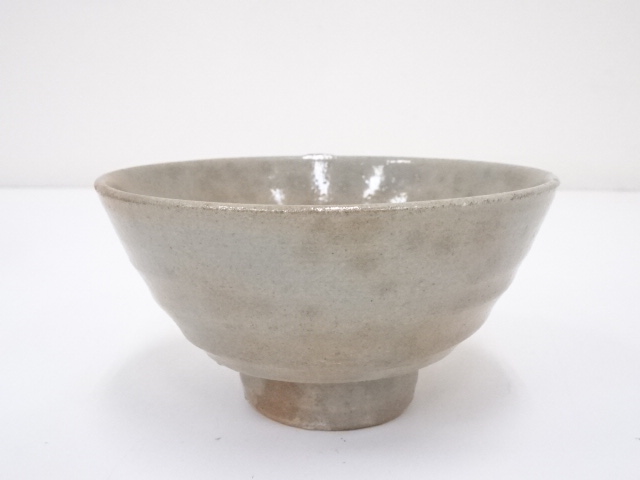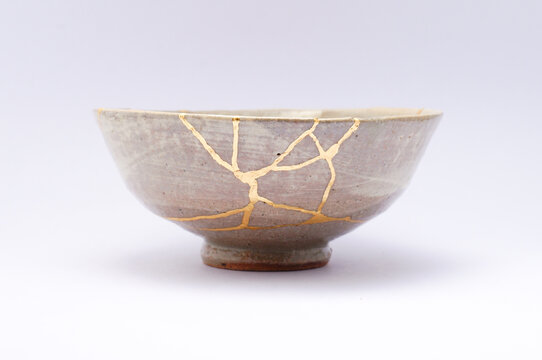|
| | Trinkets, Collections, Trivia, Momentoes, and Stuff |    |
| | Author | Message |
|---|
Priscilla
Censura

Posts : 2772
Join date : 2012-01-16
 |  Subject: Trinkets, Collections, Trivia, Momentoes, and Stuff Subject: Trinkets, Collections, Trivia, Momentoes, and Stuff  Tue 06 Jul 2021, 18:36 Tue 06 Jul 2021, 18:36 | |
| At an age when I should be taking a good hard look at a large accumulation of assorted 'Why on Earth did I ever Buy That,' sort of stuff, I gather this tendency to gather trinkets and keepsakes is part of the human condition. There must be notable - or strange hoards and bits collected thus through out history. i know Etruscans paid the earth for Ostrich eggs....... Ah well, it might make an interesting thread - err.....anyone want my perfect minute Indio Pacific seashells in a matchbox with magnifying glass? |
|   | | Temperance
Virgo Vestalis Maxima

Posts : 6895
Join date : 2011-12-30
Location : UK
 |  Subject: Re: Trinkets, Collections, Trivia, Momentoes, and Stuff Subject: Re: Trinkets, Collections, Trivia, Momentoes, and Stuff  Tue 06 Jul 2021, 19:42 Tue 06 Jul 2021, 19:42 | |
| Miss Chichester, the daughter of the extremely rich Chichester family who once owned Arlington Court in North Devon, was an avid collector of seashells. Arlington is now a National Trust property and her collection may be viewed there - three thousand shells which the young lady carefully arranged and labelled! Some are extremely rare.  More information here: She Sells Collects Seashells on the SeashoreCollections were very fashionable in earlier days - didn't people bring back all sorts of things from the Grand Tour? Having collections of interesting and unusual objects was a way of showing off how extensively one had travelled, I suppose. But some were done out of genuine interest, I am sure. Collecting plants must have been difficult - but many did get back to England still alive: I wonder what plants in our humble gardens were originally "introduced" here by enthusiastic aristocratic plant collectors? I remember admiring a set of what looked like priceless Ming vases in some posh house I once looked round. Vases were actually displayed everywhere, but these particular items were rather casually and precariously set out on an old chest on a landing. Buck House is full of such collections, of course, all treasures - along with Her Majesty's fine collection of Tupperware. If the anecdote is to be believed, Jackie Kennedy was not too impressed: she is reputed to have commented (not to the Queen) that the place was stuffed full of old junk. If I remember correctly, Her Majesty's grandfather, King George V, loved his stamp collection, one of the finest - and most valuable - in the world. I hope we didn't loot too much of all the best stuff from former colonies, but I expect we did. Perhaps not so much in private collections though? |
|   | | Vizzer
Censura

Posts : 1853
Join date : 2012-05-12
 |  Subject: Re: Trinkets, Collections, Trivia, Momentoes, and Stuff Subject: Re: Trinkets, Collections, Trivia, Momentoes, and Stuff  Sat 10 Jul 2021, 12:12 Sat 10 Jul 2021, 12:12 | |
| In the 14th Century, after another period of interminable clan warfare with which the country had become all too familiar, Japan had been riven apart with 2 rival courts, one in Kyoto and one in Nara, each claiming to be the capital of the country and each with its own rival emperor. It was a stalemate interspersed with periodic skirmishes between the 2 sides. After more than 50 years of this deadlock, the shogun, Ashikaga Yoshimitsu, managed to negotiate a peace treaty in 1392 whereby the capital would alternate between the 2 courts. As part of the deal, Nara agreed to return the Imperial Regalia to Kyoto (the traditional capital) as a goodwill gesture. But it was a ruse. With the Imperial Regalia back in Kyoto, the Nara emperor was declared to have submitted to Kyoto and to have forfeited his claim to the throne. When the Kyoto emperor then subsequently abdicated in favour of his own son, this was seen a masterstroke with the new young Kyoto emperor being able to be presented to the whole country as a unifying figure and thus bring the schism to an end. Outmanoeuvred the Nara emperor went into quiet retirement. Following reunification, the shogun Yoshimitsu also offically retired but his actual power grew exponentially. And this was augmented by an economic boom which was prompted partly as a result of the peace dividend and partly as a result of increased trade with China and Korea. Yoshimitsu himself became personally very wealthy. The prosperity of this new era (the Muromachi era) saw everything Chinese suddenly became fashionable. In an attempt to put warlording and parochialism behind them, people would ape Chinese manners, dress in Chinese clothes, sport Chinese hairstyles and admire Chinese painting etc. There was a simultaneous flourishing of poetry, drama, gardening, architecture and flower arranging. Perhaps most significantly, the Muromachi era saw the development of the tea ceremony. Although people had been drinking tea in Japan for hundreds of years, the renewed interest in the tea ceremony was another attempt by partakers to try to behave in an ever-so Chinese and ever-so sophisticated way. Ultimately the Japanese tea ceremony would take on a life of its own, becoming further refined and elevated, whereby today it is a distinct and world-famous cultural icon in its own right. And Yoshimitsu was right at the heart of this development. He would entertain guests in his exquisite retirement villa and wow them with his prized collection of Ming ceramic tea bowls. Only the most important guests, however, would get to drink out of the Ming. For day-to-day use and for lower-ranking visitors, tea would be served from Korean bowls (which were, nevertheless, themselves much sought after items) but the best Ming remained on the display platform.  (Ming gaiwan and tea bowls)  (Korean ido chawan tea bowl) None of Yoshimitu’s collection is known to survive. This is slightly puzzling because another development in Japanese culture which he promoted was the Zen notion of wabi sabi (forlorn grace) whereby ancient and functional artefacts are valued despite or even because of wear and tear. In fact, Ashikaga Yoshimitsu is said to have pioneered the distinctly Japanese technique of kintsugi (golden joinery). If a pot got broken, then the pieces would be reassembled and glued back together with gold-dust-infused glue. Thus the join was in no way to be hidden or concealed but rather celebrated as evidence of the life and value of the artefact.  (Kintsugi repaired tea bowl) |
|   | | Triceratops
Censura

Posts : 4377
Join date : 2012-01-05
 |  Subject: Re: Trinkets, Collections, Trivia, Momentoes, and Stuff Subject: Re: Trinkets, Collections, Trivia, Momentoes, and Stuff  Mon 12 Jul 2021, 20:51 Mon 12 Jul 2021, 20:51 | |
| George V was an avid stamp collector and in 1904 paid the then record price of £1450 for a stamp, a Mauritius 2d Blue.  |
|   | | Caro
Censura

Posts : 1522
Join date : 2012-01-09
 |  Subject: Re: Trinkets, Collections, Trivia, Momentoes, and Stuff Subject: Re: Trinkets, Collections, Trivia, Momentoes, and Stuff  Tue 13 Jul 2021, 03:06 Tue 13 Jul 2021, 03:06 | |
| Joseph Banks was an avid collector of botanical species. From our Te Papa (National Museum of New Zealand) site is the following:
The legacy of this voyage was immense [round the Pacific including NZ/Aotearoa]. It boosted the profile of science. The vast collection of plant specimens Banks and his colleague Daniel Solander brought back became the basis for one of the best herbariums in the world (now in the Natural History Museum in London). Some of the specimens they collected in New Zealand are now held in Te Papa's botany collection. The hundreds of plant drawings made by artist Sidney Parkinson on the voyage kept groups of artists and engravers employed, at Banks' expense, for years preparing them for publication.
Banks hoped to take a bigger and even better equipped party on Cook's second voyage in 1772, but his accommodation requirements proved impossible to fulfil without endangering the safety of the ships. He withdrew from the voyage in pique and went on a field trip botanising in Iceland instead.
From then onwards, Banks became more a promoter and patron of science than a researcher as such. He met King George III as a result of his south sea travels, and this started a lifetime friendship between the two. In 1772, the King appointed him scientific adviser at Kew Gardens. It was Banks' influence and organisational skills that set up the gardens as a centre of practical botany, with a growing (in both senses of the word) collection of plants that might be ornamental or useful in some way from all over the world. He also organised the introduction of plants useful for commercial harvest into other countries, for example, of tea from its native China into India, and of breadfruit from Tahiti to the West Indies. |
|   | | Triceratops
Censura

Posts : 4377
Join date : 2012-01-05
 |  Subject: Re: Trinkets, Collections, Trivia, Momentoes, and Stuff Subject: Re: Trinkets, Collections, Trivia, Momentoes, and Stuff  Tue 13 Jul 2021, 18:02 Tue 13 Jul 2021, 18:02 | |
| Brooke Bond Tea used to include collection cards in their packs. The success of these, prompted them to start a small publication unit, named Osprey, which in turn has become a major success in its' own right.  |
|   | | Sponsored content
 |  Subject: Re: Trinkets, Collections, Trivia, Momentoes, and Stuff Subject: Re: Trinkets, Collections, Trivia, Momentoes, and Stuff  | |
| |
|   | | | | Trinkets, Collections, Trivia, Momentoes, and Stuff |    |
|
Similar topics |  |
|
| | Permissions in this forum: | You cannot reply to topics in this forum
| |
| |
| |
